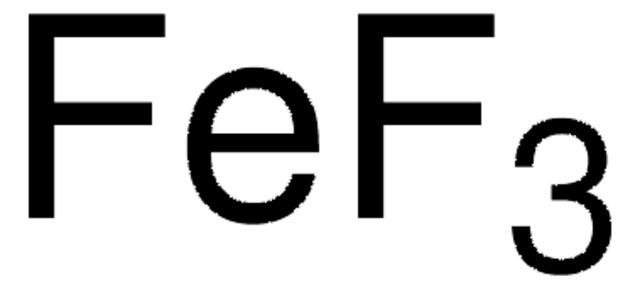About This Item
vapor pressure
1.4 mmHg ( 0 °C)
Quality Level
product line
ReagentPlus®
assay
≥99%
form
powder
mp
993 °C (lit.)
SMILES string
[F-].[Na+]
InChI
1S/FH.Na/h1H;/q;+1/p-1
InChI key
PUZPDOWCWNUUKD-UHFFFAOYSA-M
Looking for similar products? Visit Product Comparison Guide
Related Categories
Application
- Investigations of the reaction mechanism of sodium with hydrogen fluoride to form sodium fluoride and the adsorption of hydrogen fluoride on sodium fluoride monomer and tetramer.: The paper delves into the reaction mechanisms between sodium and hydrogen fluoride, and the adsorption properties of hydrogen fluoride on sodium fluoride structures, which are vital for chemical synthesis and industrial applications (Yu et al., 2024).
Legal Information
signalword
Danger
hcodes
Hazard Classifications
Acute Tox. 3 Oral - Eye Irrit. 2 - Skin Irrit. 2
supp_hazards
Storage Class
6.1D - Non-combustible, acute toxic Cat.3 / toxic hazardous materials or hazardous materials causing chronic effects
wgk_germany
WGK 1
flash_point_f
Not applicable
flash_point_c
Not applicable
Certificates of Analysis (COA)
Search for Certificates of Analysis (COA) by entering the products Lot/Batch Number. Lot and Batch Numbers can be found on a product’s label following the words ‘Lot’ or ‘Batch’.
Already Own This Product?
Find documentation for the products that you have recently purchased in the Document Library.
Customers Also Viewed
Our team of scientists has experience in all areas of research including Life Science, Material Science, Chemical Synthesis, Chromatography, Analytical and many others.
Contact Technical Service



